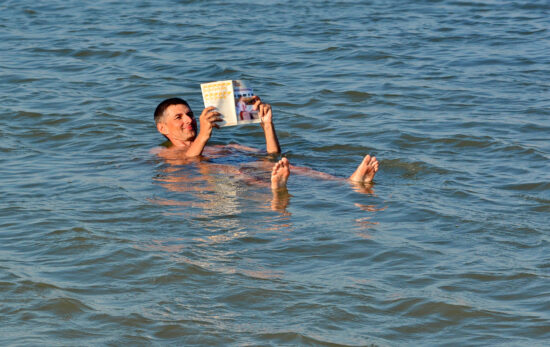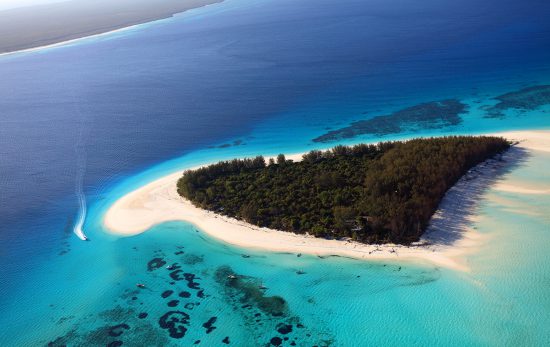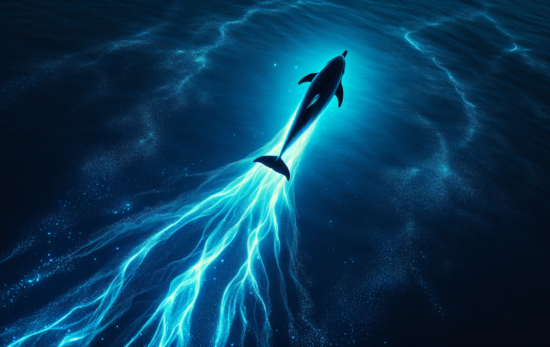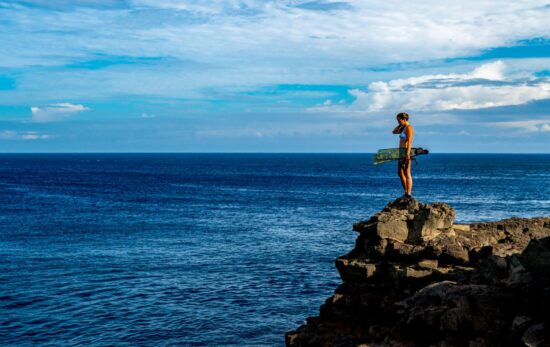Every year, millions of people visit California’s iconic beaches and world-famous parks: Joshua Tree, Yosemite, Disneyland. But only divers get to experience California’s stunning underwater attractions. With 1,350 km (840 miles) of coastline and dozens of islands, there’s a fun and memorable experience awaiting divers of all levels in California. Read on to learn about the best places to go scuba diving in California.
Where to Find the Best Scuba Diving in California
Generally speaking, scuba divers are easy-going and open-minded. But if you want to see divers get their hackles up, ask a Northern California diver and a Southern California diver to debate which part of the state has better diving.
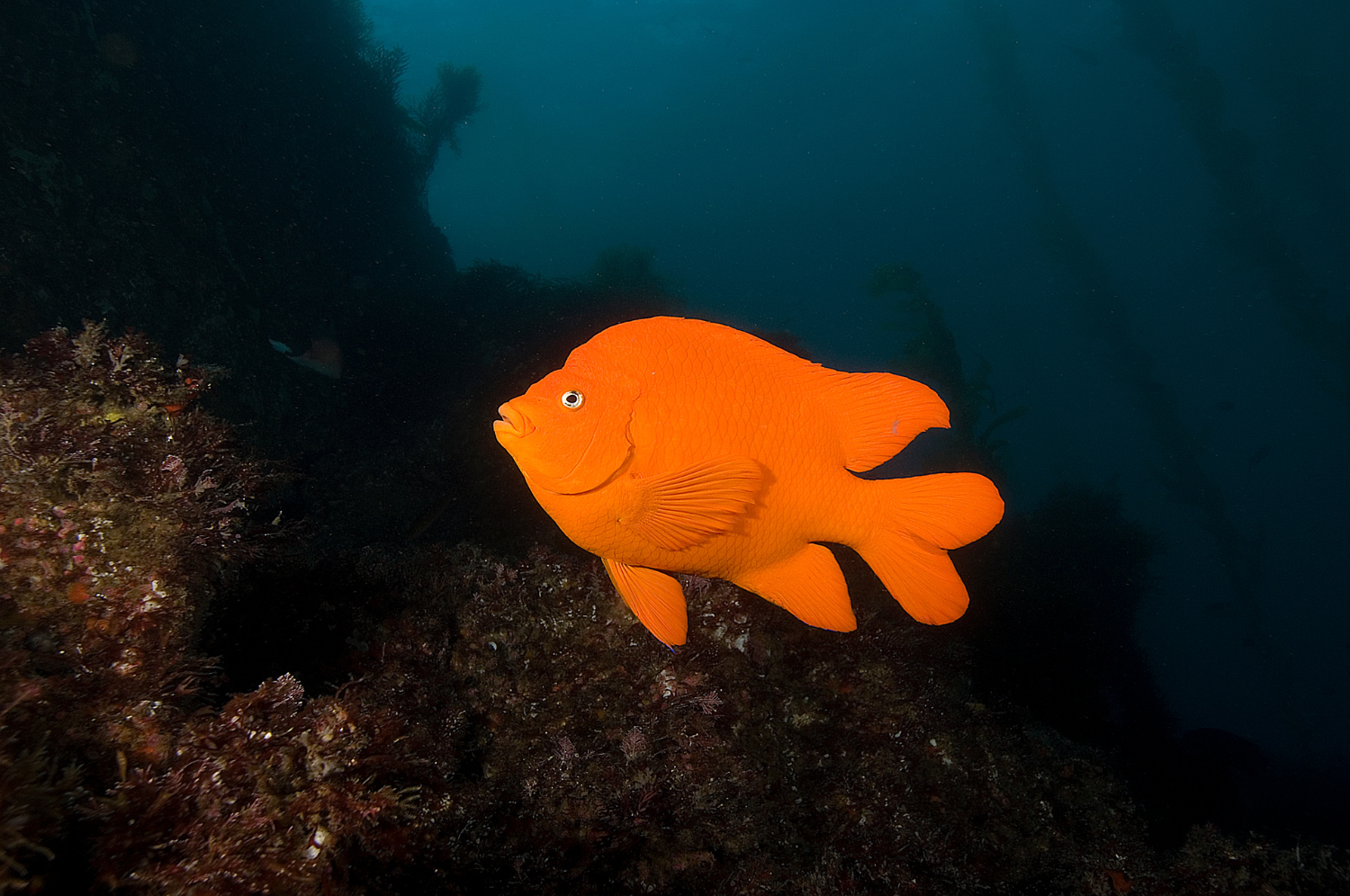
From one end of the state to the other, you’ll find kelp forests filled with sheephead, bat rays, kelpfish, halibut and sole, rockfish, cabezon and the iconic orange Garibaldi (California’s state marine fish). There’s also great shore diving, kayak diving and the annual squid run.
So, which part of California has the best diving? We’ll review the best dive spots from north to south – the final decision is up to you.
Scuba Diving in Northern California

Smith River
Just south of the Oregon border, the Smith River has some of the most consistent and accessible diving at the northern end of California. The dive site Early Hole has 15m (50ft) visibility on average and is diveable most of the year. From late November through early March, winter storms bring strong currents. You can expect to see different types of trout, salmon and green or white sturgeon.

Lake Tahoe
Located in the Sierra Nevada mountains at an elevation of 501 m (1,645 ft), Lake Tahoe is a scenic place to earn an Altitude Diving Specialty certification. With water temps ranging from 4°C (40°F) at depth to 17°C (63°F) at the surface, Lake Tahoe is also a great place for dry suit diving.
Two-thirds of Lake Tahoe is in California and the other third is in the state of Nevada. The most popular and most accessible dive site on Lake Tahoe is Sand Harbor, but it’s on the Nevada side.
On the California side, the Emerald Bay Maritime Heritage Trail is well worth a visit. Scuba divers, freedivers and snorkelers can see more than a dozen historic watercraft at depths ranging from 3-18m (10-60 ft). Visibility is typically very good, up to 30m (100ft).
Read more about scuba diving Lake Tahoe and see a map of Lake Tahoe dive sites.

The Mendocino Coast
The Mendocino Coast is known for its rugged and picturesque coastline. Divers not only get to explore the underwater beauty but also enjoy the stunning coastal scenery above the water. Compared to some other popular dive destinations in California, such as Monterey Bay or Channel Islands, the Mendocino Coast tends to be less crowded. This means you can often enjoy a more peaceful and intimate diving experience.
The underwater kelp forests along the Mendocino Coast are a highlight for divers. These underwater ecosystems are not only visually stunning but also provide shelter for many marine species, making them a popular attraction. Divers can encounter colorful fish, kelp forests, sea lions, seals, and even occasional larger creatures, like whales and dolphins.
Scuba Diving in the San Francisco Bay Area
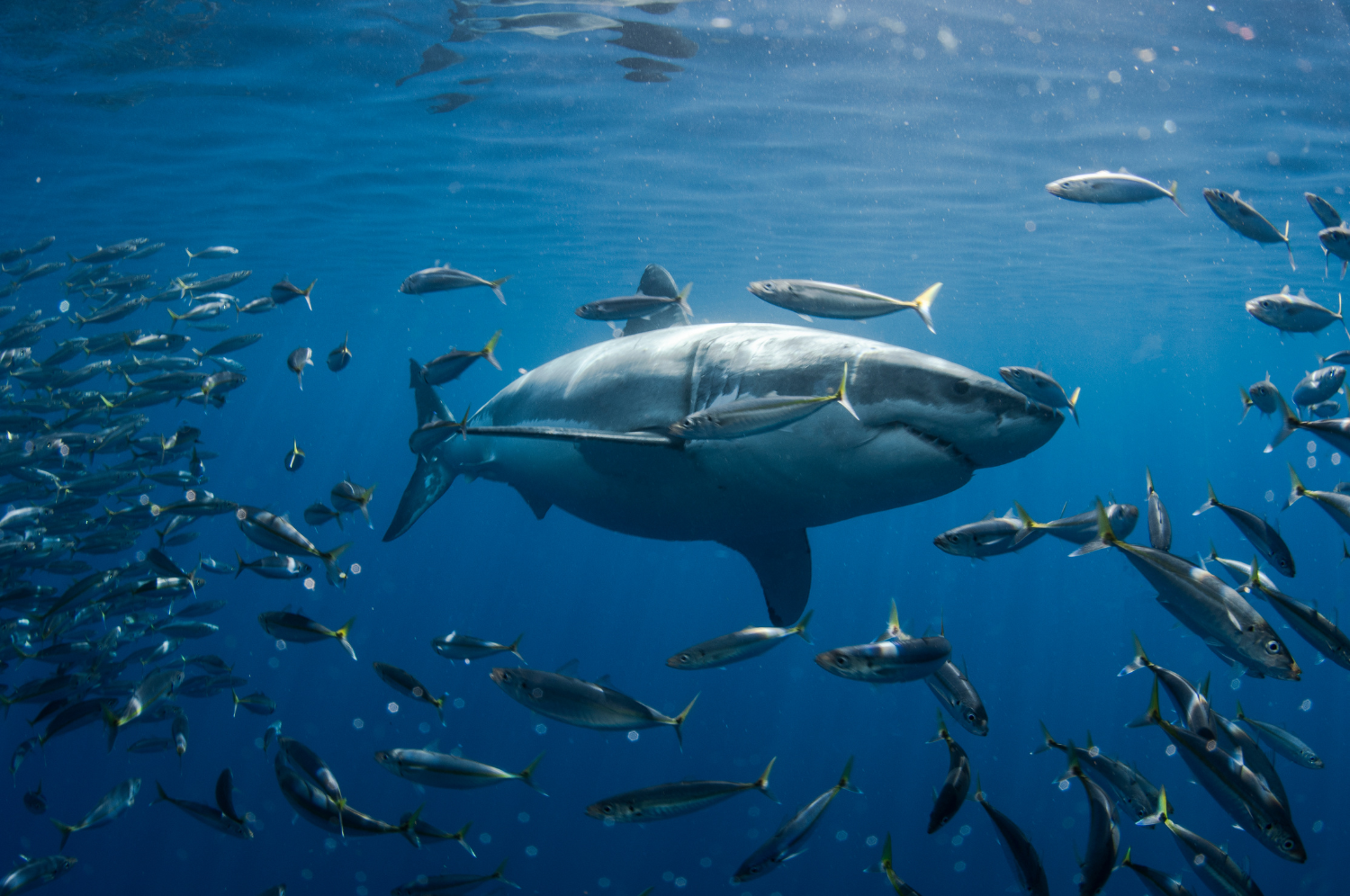
The Farallon Islands
Located just 48 kilometers (30 miles) from the Golden Gate Bridge, the Farallon Islands are technically part of the City of San Francisco. But compared to the city’s other famous islands (Alcatraz, Angel and Treasure Island), the Farallons are relatively unknown (unless you’re a diver).
From September to November, Southeast Farallon and Maintop Island are a hotspot for cage diving with great white sharks. Some of the largest great whites ever seen were spotted in the Farallons. If you’re interested in learning more about these islands and great white shark research, I highly recommend reading The Devil’s Teeth.
Though best known for shark diving, you can also dive recreationally in the Farallons from approximately April through August. The islands have been a National Wildlife Refuge for more than 100 years and are home to an abundance of marine life. That said, the depths, bumpy water and strong currents make the Farallons a no-go for beginner divers. Read more about diving the Farallon Islands.

Monterey Bay
Divers of all levels can explore Monterey Bay. The National Marine Sanctuary has been called “The Serengeti of the Sea” because of its diverse and exciting marine life. Here, it’s possible to spot 34 species of marine mammals and more than 525 species of fish.
When diving Monterey Bay, expect to see playful harbor seals and sea lions, Spanish shawl and rainbow nudibranchs, octopuses and more. Depending on the time of year, you may see whales or dolphins while suiting up.
Breakwater Cove and Lover’s Point are the best dive sites for beginners and for night diving. If you love adorable otters (who doesn’t?) pop by Otter’s Cove. There’s also the infamous Monastery Beach. On a flat, calm day you might wonder why divers make such a big deal about it; but when the surf is up, entering and exiting Monastery can be dangerous.
When diving a new area, it’s always a good idea to hire an experienced guide. A guide can point out interesting critters you might otherwise overlook. They will also help ensure your dive is as fun and stress-free as possible. Use the PADI® dive shop locator to quickly connect with a diving expert.

Point Lobos
The Point Lobos State Marine Reserve begins at the north end of Monastery Beach and ends at the mouth of Mal Paso Creek. That said, when people talk about the amazing diving at Point Lobos, they’re talking about Bluefish and Whalers Cove. These dive sites have been protected since 1960, and the underwater environment is simply stunning. Explore lush kelp forests, mini caves and see a mind-boggling amount of marine life.
If you want to dive Point Lobos, you have to plan ahead. Only 10 buddy teams are allowed per day, and you must make a reservation in advance via the California State Parks’ website.
Scuba Diving in Southern California
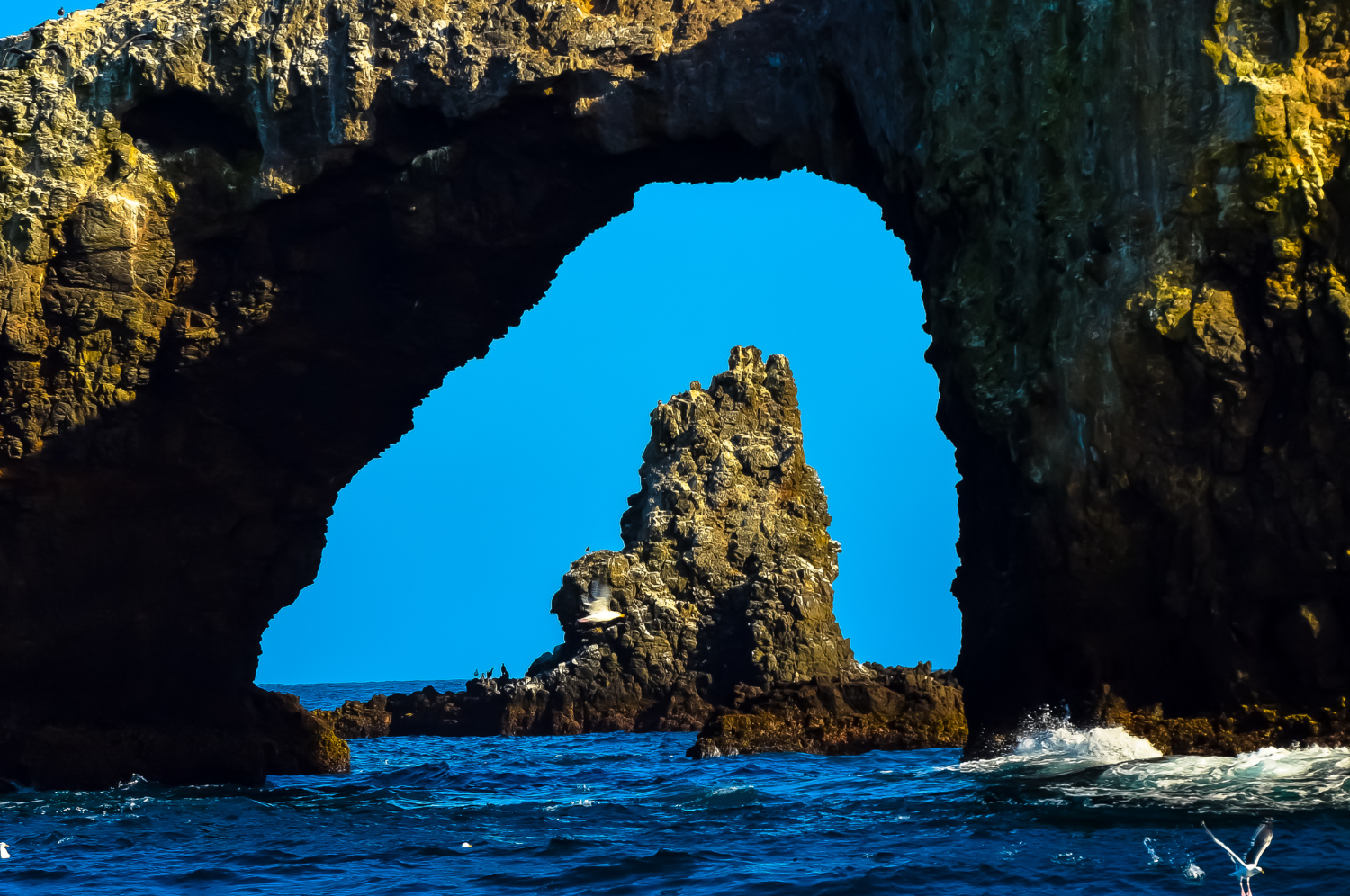
The Channel Islands
The kelp forests of California are a must-do for any diver. Even if you prefer warm water, it’s worth wearing the extra neoprene, I promise. There’s something magical about watching sunbeams streaming through the gently swaying kelp fronds. It’s easy to imagine you’re floating through an actual forest – until a sea lion or seal comes darting through the ‘trees’.
You’ll find kelp up and down California’s coastline, but the kelp forests surrounding Channel Islands National Park are some of the most pristine. Choose your own adventure: explore the Channel Islands on a liveaboard, a day boat, or plan a multi-day adventure with diving, kayaking, camping, etc.
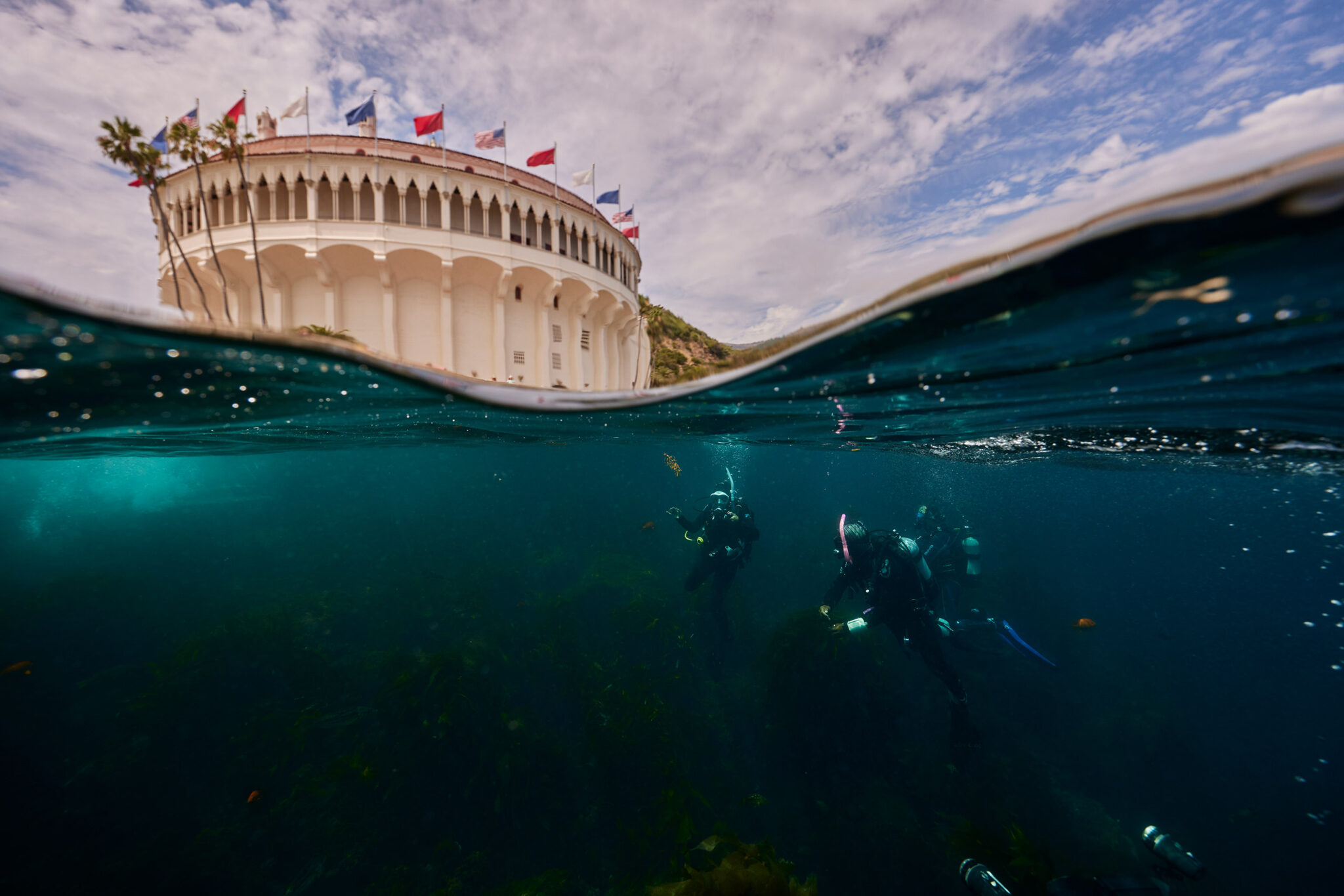
Catalina Island and Farnsworth Banks
If your trip to California includes non-divers, consider a day trip or overnight getaway to Catalina Island. You can book a ferry from Long Beach, San Pedro, Newport Beach or Dana Point and hire dive gear on island. While you explore the dive park at Casino Point, your non-diving friends can snorkel, shop, bar hop or simply wander around the quaint town of Avalon. The dive park is suitable for divers of all levels, and Catalina is one of the best places to find giant black sea bass and electric rays (don’t touch!). If you’re an experienced diver and visiting California in late September or October, don’t miss a trip to Farnsworth Banks.
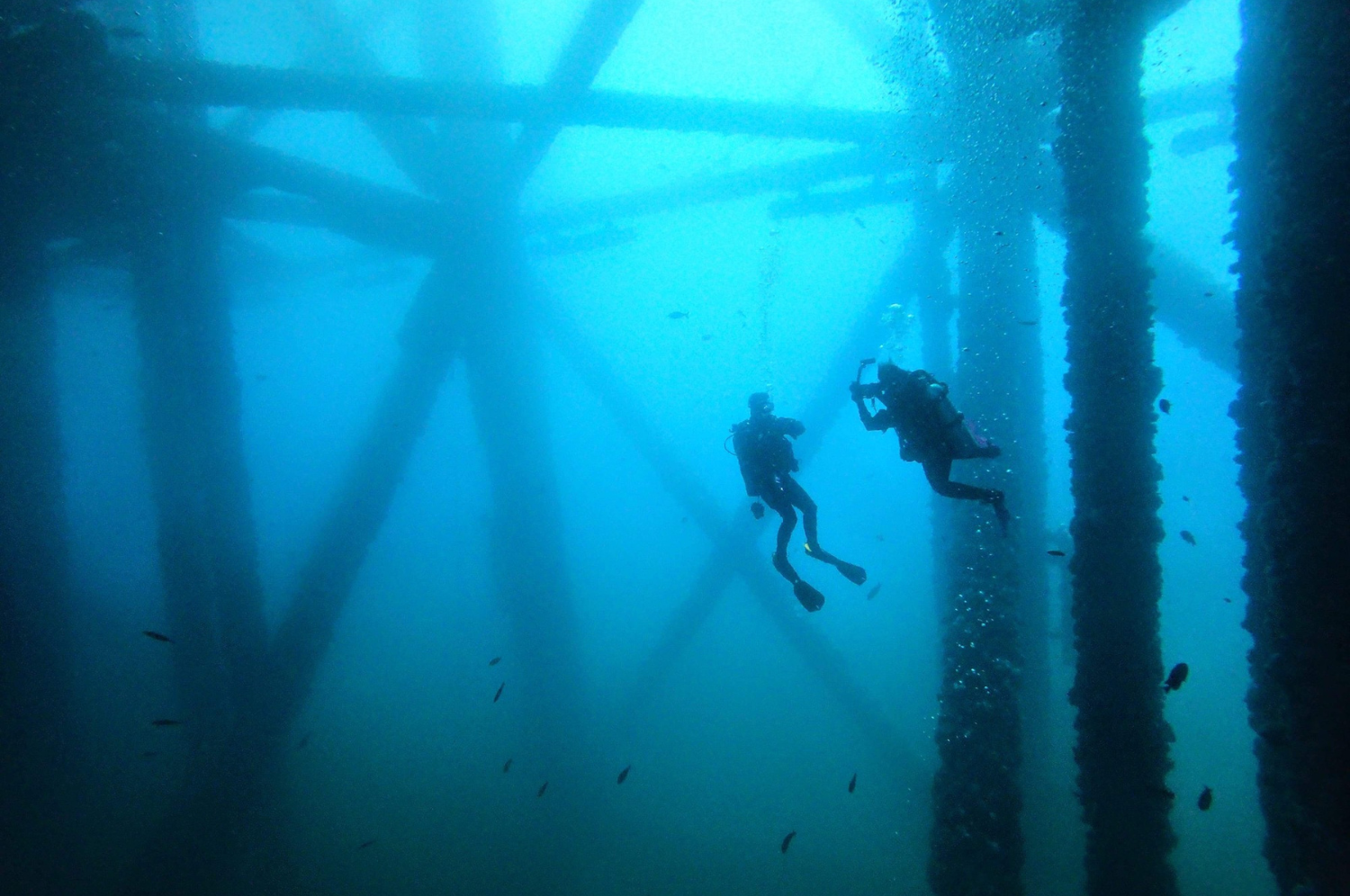
Oil Rig Diving California
In heavily-populated Southern California, humans have made a major impact on the environment. Decommissioned oil rigs provide critical habitat for local marine life and are a unique diving experience. Some of the most popular oil rig diving sites in Southern California include the Eureka, Ellen, and Elly platforms, which are located off the coast of Long Beach and Huntington Beach. There are also platforms off the coast of Santa Barbara and Ventura County.
Oil rigs create a thriving ecosystem underwater. You can expect to encounter a diverse range of marine life, including fish, kelp forests, sea lions, and sometimes even larger creatures, like sharks and dolphins.
Safety is a top priority when diving around oil rigs. Be aware of potential hazards, such as strong currents and underwater structures. It’s advisable to dive with an experienced guide or instructor who knows the area well. There are many dive shops and charter companies in Southern California that offer guided trips to oil rig dive sites. They can provide you with equipment, guidance, and information about the specific dive sites.
Here are some photos of what you can expect to see on an oil rig dive in California.

San Clemente Island
San Clemente Island is known for its exceptionally clear water, which can offer excellent visibility for divers. Clear water enhances the overall diving experience by allowing you to see underwater landscapes, marine life, and underwater structures more clearly.
The island’s underwater ecosystem is rich and diverse. Divers can encounter a wide variety of marine life, including colorful fish, kelp forests, sea lions, sea stars, and numerous invertebrate species. San Clemente Island is also known for attracting larger marine animals, like sharks, dolphins, and whales, making it an exciting destination for underwater wildlife enthusiasts.
While San Clemente Island offers dive sites suitable for divers of all experience levels, it also has more challenging sites for advanced divers. These sites may have stronger currents and greater depths, offering experienced divers a chance to test their skills and explore deeper waters.
It’s important to note that access to San Clemente Island can be somewhat restricted due to its military use, and some dive sites may require special permits or coordination with authorities. As with any diving destination, it’s crucial to check current conditions, dive responsibly, and follow local regulations and guidelines for a safe and enjoyable experience.
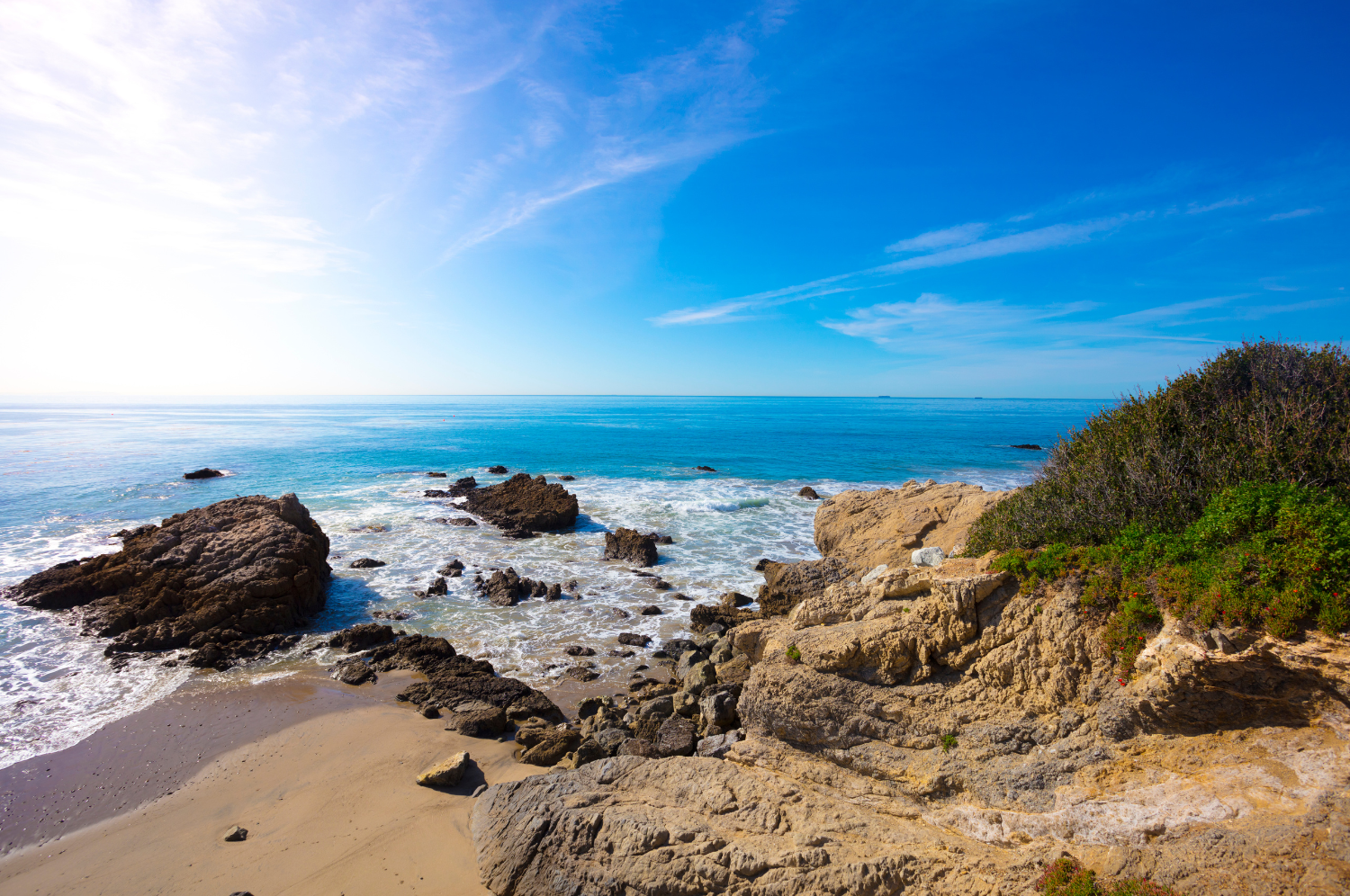
Malibu
Malibu, California, is known for its beautiful coastline and offers some excellent scuba diving opportunities for divers of various skill levels.
This part of California features vibrant kelp forests that provide a unique and visually stunning underwater environment. These kelp forests serve as a habitat for various marine life, including fish, invertebrates, and sea mammals. Diving through the towering kelp stalks is an unforgettable experience.
Malibu offers numerous accessible shore diving sites, making it convenient for divers who prefer not to use boats. Some popular shore diving spots include Point Dume, Paradise Cove, and Leo Carrillo State Beach. These locations boast relatively easy entry and exit points, suitable for divers of varying experience levels.
Several areas around Malibu have been designated as marine protected areas (MPAs). This means they are actively managed to conserve marine ecosystems and biodiversity. These MPAs can offer excellent diving experiences while promoting marine conservation.
Scuba Diving in San Diego
Even though it’s considered part of Southern California, San Diego gets its own section because the diving opportunities here are diverse and spectacular. There’s a reason the Scripps Institution of Oceanography, PADI Americas and many scuba equipment manufacturers are headquartered within an hour’s drive of “America’s Finest City“.
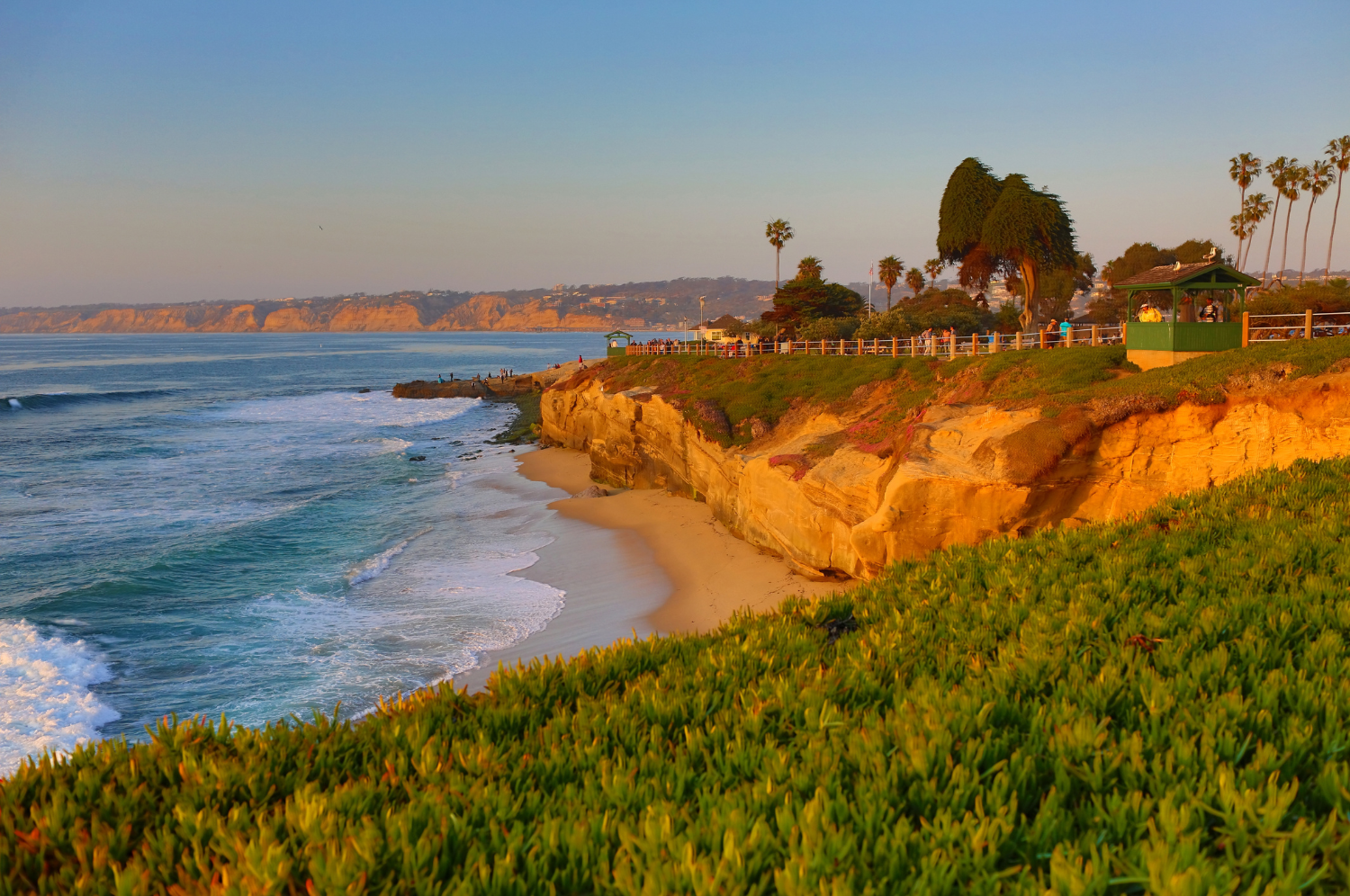
La Jolla Cove & Shores
Located just north of San Diego, the seaside village of La Jolla (pronounced: la-hoy-yuh) is a superb place to kayak, surf, SUP, snorkel and scuba dive. The 6,000-acre underwater park has four distinct ecological areas (kelp, seagrass, rocky reef and canyon) and is popular with divers of all levels. Both La Jolla Cove and La Jolla Shores are easily accessible and spectacular shore dives. Expect to see seals and sea lions, stingrays, horn sharks, garibaldi, kelp bass, sheephead and (if you’re lucky) a broadnose seven gill shark.

Wreck Alley
Wreck Alley is named for its collection of intentionally sunken ships, creating an underwater museum of sorts. These shipwrecks include the HMCS Yukon, a Canadian destroyer, and the Ruby E, a former kelp cutter. These wrecks provide an excellent opportunity for divers to explore historic vessels in a controlled environment. It’s a great place to earn your Wreck Diver certification!
The shipwrecks of Wreck Alley have become artificial reefs, attracting a diverse range of marine life. Divers can encounter various species of fish, including kelp bass, garibaldi, and colorful nudibranchs. The wrecks also host schools of baitfish and larger predators, like barracuda and leopard sharks. Efforts have been made to ensure the preservation of the wrecks and the marine ecosystem in Wreck Alley. Conservation organizations and local dive groups work to maintain the wrecks and promote responsible diving practices.
Overall, Wreck Alley’s combination of shipwrecks, marine biodiversity, accessibility, and suitable conditions for divers of different skill levels makes it a popular and fantastic place to scuba dive in California.
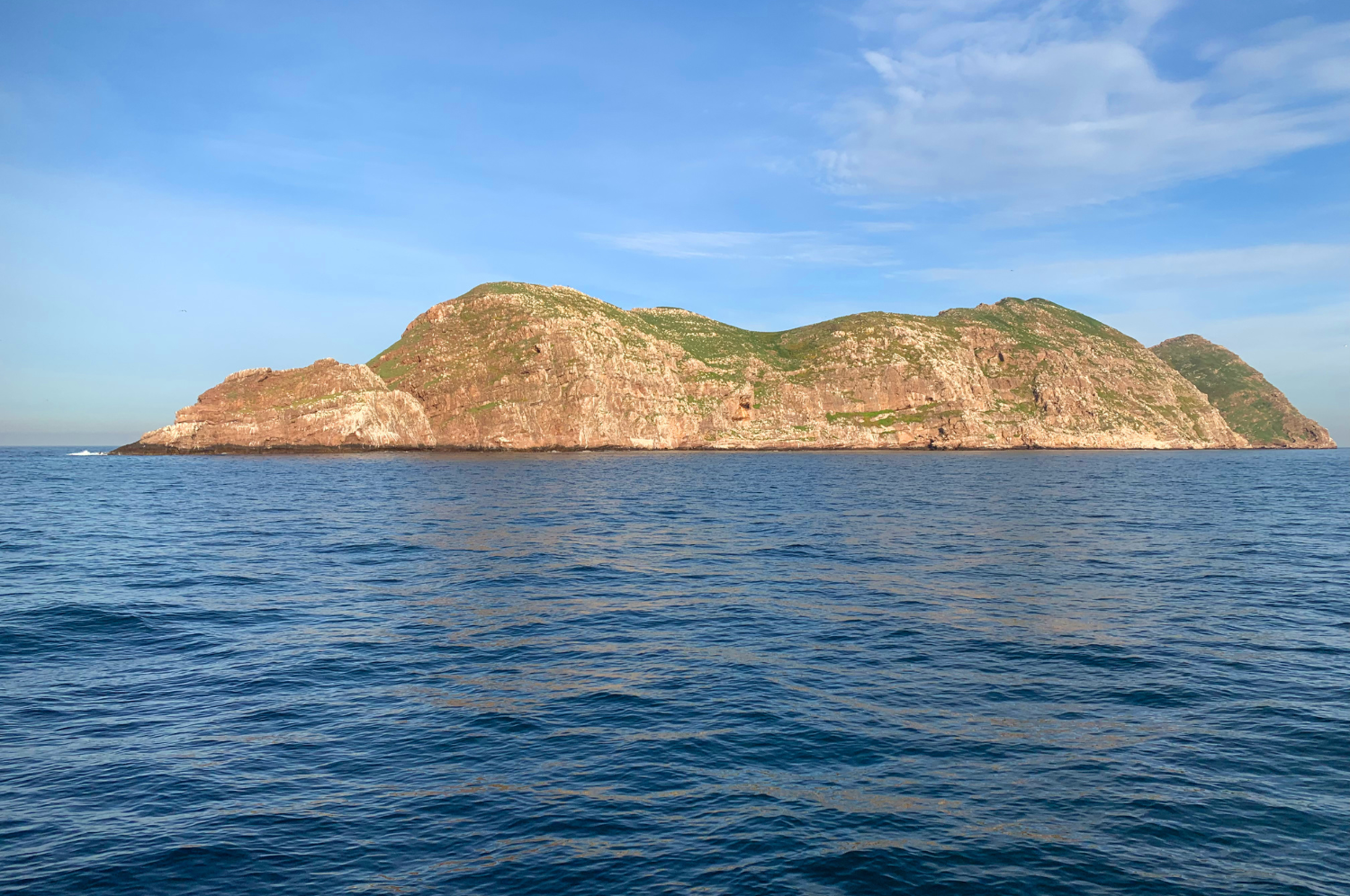
The Coronado Islands
The Coronado Islands are a popular destination for scuba diving enthusiasts, especially for those located in Southern California and the Baja California region. The Coronados are located in Mexico 24km (15 miles) south of San Diego or a 90 minute to 2 hour boat ride (each way), depending on the boat and the conditions.
The waters around the Coronado Islands are known for their clear visibility, often exceeding 100 feet (30 meters) or more. This crystal-clear water allows divers to fully appreciate the vibrant marine life and stunning underwater landscapes. These islands offer a sense of adventure and exploration, as the underwater world is still relatively unspoiled. Divers can discover new dive sites and potentially encounter rare or unusual marine species.
It’s important to note that while the Coronado Islands offer excellent diving opportunities, divers should be aware of local regulations, safety considerations, and environmental conservation efforts to protect the fragile marine ecosystems in the area. Additionally, conditions can vary, so it’s advisable to check with local dive operators for current information and guidance before planning your dive trip.
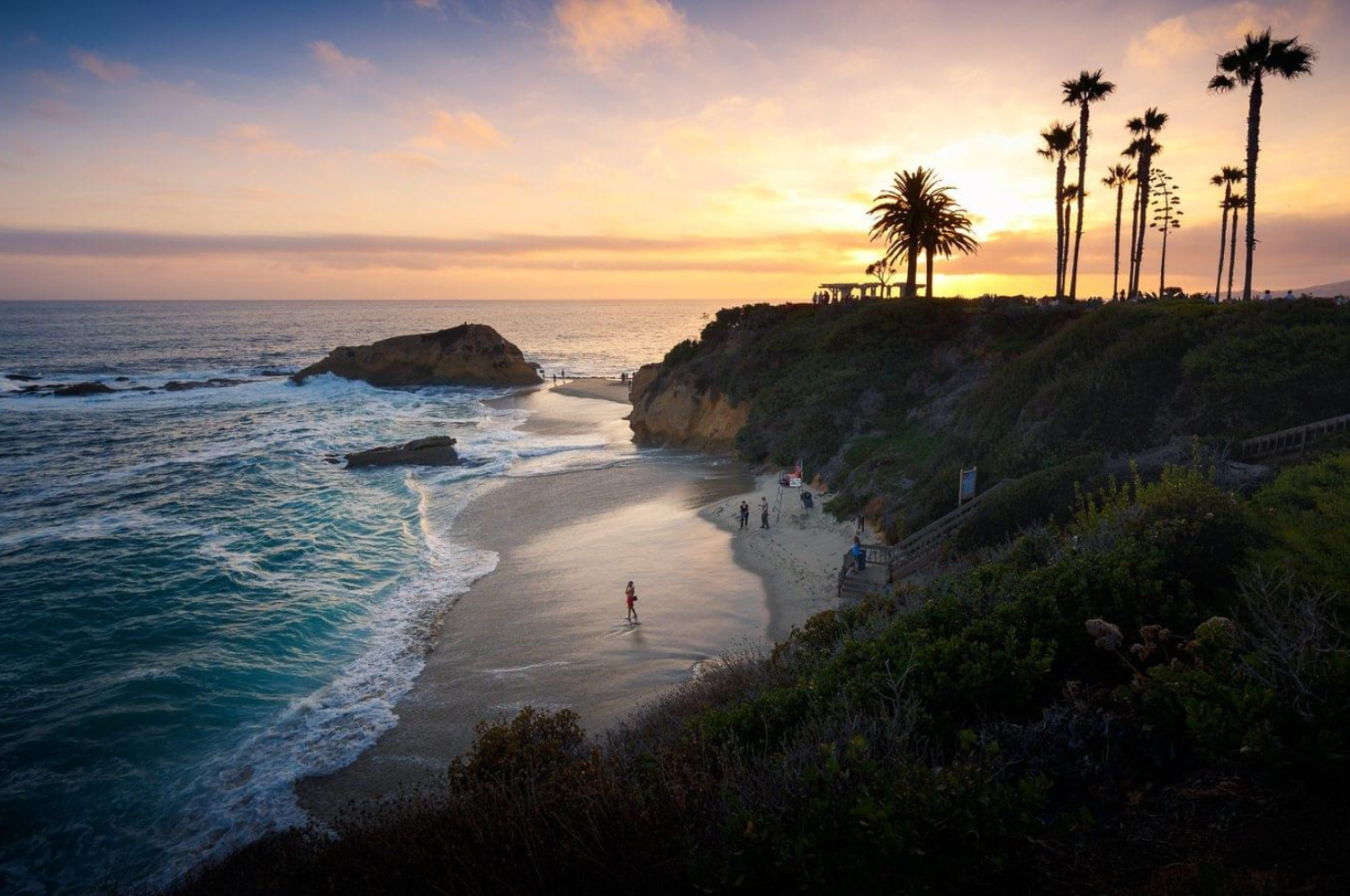
The Best Time to Dive in California
Diving in California is good year-round. Visibility is typically 10m (32ft) or better. Some dive sites, such as Casino Point in Catalina, regularly have 18m (60ft) visibility or more. A lot depends on the dive site’s location and weather conditions.
From November through May, most divers in Southern California wear a 7 mm wetsuit with a hood, booties and gloves. June through October, some divers switch to a 5 mil or don’t wear a hood, but you’ll also see divers in dry suits year-round. In Northern California, you’ll want a 7 mil with a hooded vest, booties and gloves, or a drysuit. A local PADI dive shop is the best place to contact for more information and details about appropriate gear.
Are you ready to plan your next dive trip to California? The dive travel experts at PADI Travel® can help you plan your trip. Or, use the PADI dive shop locator to find a dive shop or dive boat near the area you plan to visit.
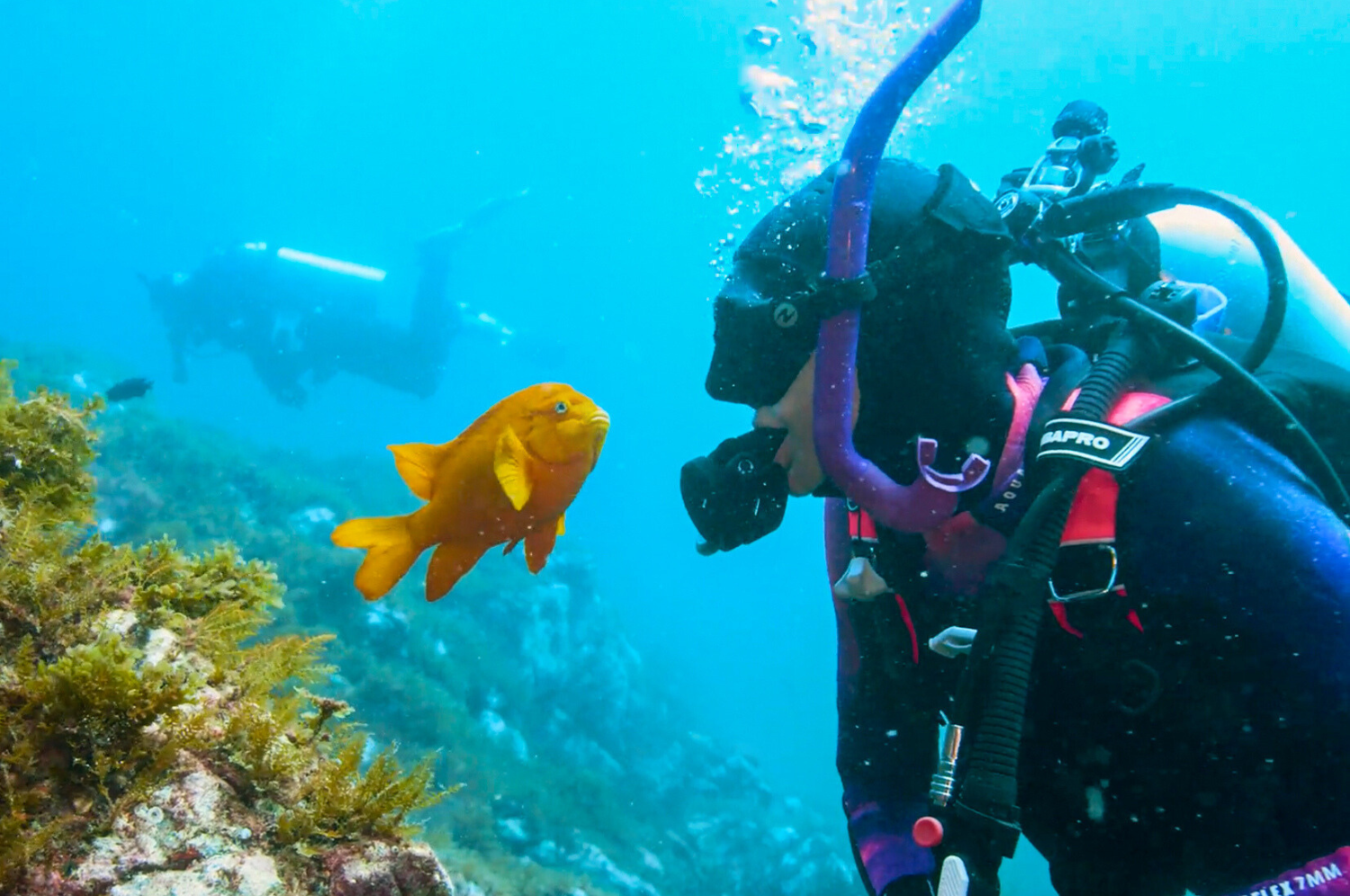
Learn to Dive in California and #LiveUnfiltered
Calling all non-divers! Discover the unparalleled thrill of exploring the underwater world by learning to scuba dive in the stunning state of California. California’s diverse coastline offers an array of underwater wonders, making it an ideal destination for aspiring divers. From the kelp forests of Monterey Bay to the vibrant marine life in Channel Islands National Park, there’s something for everyone beneath the waves.
But scuba diving in California isn’t just about the breathtaking scenery; it’s a chance to #LiveUnfiltered. As you descend into the depths, you’ll leave behind the stresses of everyday life. Instead, you’ll immerse yourself in a world of vibrant colors, intriguing creatures, and boundless adventure. Scuba diving not only connects you with nature but also fosters a deep sense of inner peace and wonder. It’s an opportunity to escape the ordinary and experience life’s most raw and unfiltered moments. So, take the plunge, embrace the ocean’s mysteries, and #LiveUnfiltered as you embark on your scuba diving journey in California.

